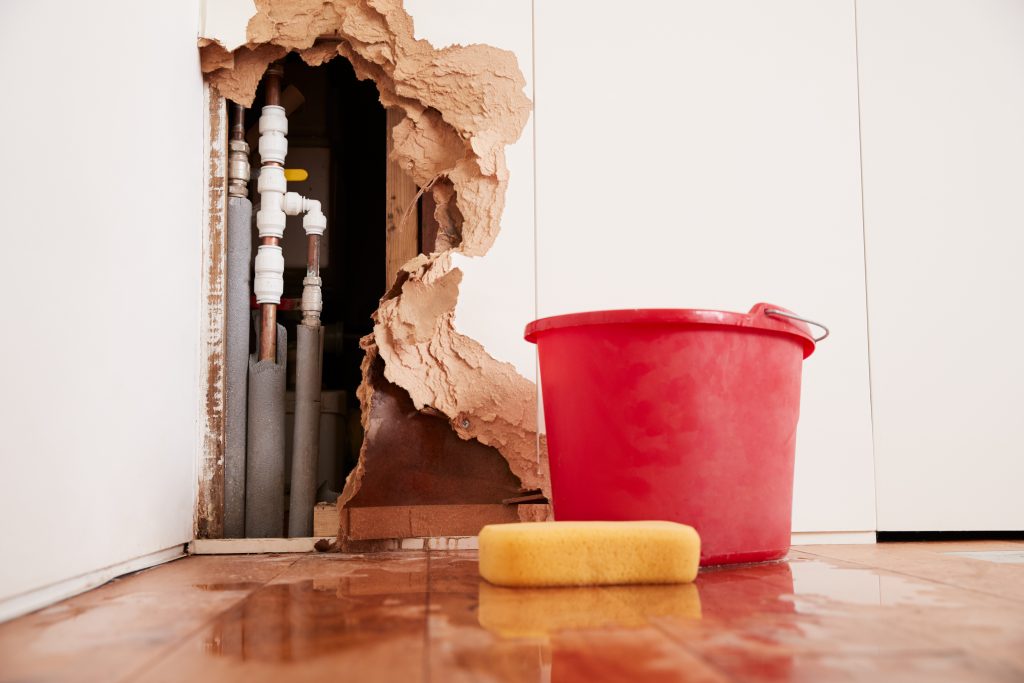We've encountered the article relating to Leaking water lines directly below on the internet and reckoned it made sense to talk about it with you on my blog.
.jpg)
Early discovery of leaking water lines can minimize a possible disaster. In addition to conserving you cash, it will lessen the irritation and aggravation. The moment you locate a leakage, calling your plumber for repair work is the best remedy. Nonetheless, some tiny water leaks might not show up. If you can not detect it with your naked eyes, here are some hacks that help.
1. Check Out the Water Meter
Inspecting it is a surefire method that aids you discover leakages. If it relocates, that indicates a fast-moving leak. This suggests you may have a sluggish leak that might even be below ground.
2. Inspect Water Consumption
Examine your water bills as well as track your water intake. As the one paying it, you must notice if there are any disparities. If you find sudden changes, regardless of your intake being the same, it suggests that you have leaks in your plumbing system. Bear in mind, your water costs should fall under the exact same array monthly. An abrupt spike in your costs shows a fast-moving leak.
A consistent increase every month, even with the exact same habits, shows you have a slow-moving leakage that's likewise gradually escalating. Call a plumber to thoroughly check your building, particularly if you feel a cozy location on your flooring with piping beneath.
3. Do a Food Coloring Test
When it comes to water intake, 30% comes from toilets. If the color in some way infiltrates your bowl throughout that time without flushing, there's a leakage in between the storage tank and dish.
4. Asses Exterior Lines
Don't forget to inspect your outside water lines too. Should water permeate out of the connection, you have a loose rubber gasket. One small leak can throw away heaps of water and increase your water bill.
5. Check and Assess the Circumstance
Home owners ought to make it a habit to examine under the sink counters and even inside cabinets for any type of bad odor or mold growth. These 2 red flags show a leakage so prompt focus is required. Doing regular evaluations, also bi-annually, can save you from a major trouble.
If you know your residence is already old, keep a careful eye on your heating systems, pipes, pipelines etc. Check for stainings and deteriorating as most pipes as well as appliances have a life expectancy. They will likewise naturally deteriorate due to wear and tear. If you suspect leaking water lines in your plumbing system, don't wait on it to rise. Call a professional plumber as soon as possible so you don't wind up with a terrible mess in your home.
Early discovery of leaking water lines can alleviate a prospective calamity. Some little water leaks may not be noticeable. Examining it is a guaranteed method that assists you uncover leaks. One tiny leak can waste bunches of water and spike your water expense.
If you think leaking water lines in your plumbing system, don't wait for it to escalate.
WARNING SIGNS OF WATER LEAKAGE BEHIND THE WALL
PERSISTENT MUSTY ODORS
As water slowly drips from a leaky pipe inside the wall, flooring and sheetrock stay damp and develop an odor similar to wet cardboard. It generates a musty smell that can help you find hidden leaks.
MOLD IN UNUSUAL AREAS
Mold usually grows in wet areas like kitchens, baths and laundry rooms. If you spot the stuff on walls or baseboards in other rooms of the house, it’s a good indicator of undetected water leaks.
STAINS THAT GROW
When mold thrives around a leaky pipe, it sometimes takes hold on the inside surface of the affected wall. A growing stain on otherwise clean sheetrock is often your sign of a hidden plumbing problem.
PEELING OR BUBBLING WALLPAPER / PAINT
This clue is easy to miss in rooms that don’t get much use. When you see wallpaper separating along seams or paint bubbling or flaking off the wall, blame sheetrock that stays wet because of an undetected leak.
BUCKLED CEILINGS AND STAINED FLOORS
If ceilings or floors in bathrooms, kitchens or laundry areas develop structural problems, don’t rule out constant damp inside the walls. Wet sheetrock can affect adjacent framing, flooring and ceilings.
https://www.servicemasterbyzaba.com/blog/how-to-detect-water-leakage-in-walls/

I hope you liked our article on Detecting hidden plumbing leaks. Thanks a lot for taking a few minutes to read through our piece. Are you aware of somebody who is interested by the topic? Why not promote it. We treasure reading our article about Locating water leaks.
Book Your Service